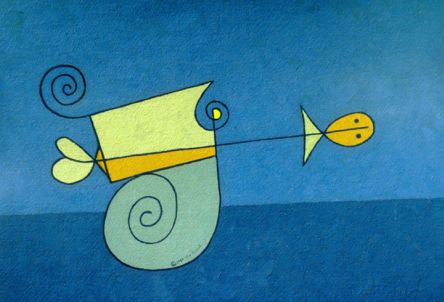
(« Goldfish Pulling a Snail Cart » by James Pollock)
« Perseverance » is the fourth of the series of segues composed to join the tracks of an album together into one continuous piece of music.
Each of the junctions highlights a specific quality or knowledge that turned out to be crucial to the completion of a project that demanded many years of sustained striving. As the title indicates, « Perseverance » evokes the capacity to keep going at those times when efforts seem insufficient, and success




